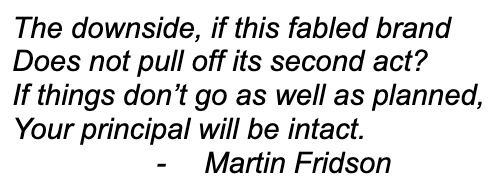
The Superpower Of Low-Priced Bonds
This Company Is A Survivor Not A Jeopardy Question

“You stole my graphical user interface…”
It was 1979 and the rivalry between Apple founder Steve Jobs and Microsoft’s Bill Gates was just beginning, when Jobs made this accusation against Gates.
“We both had this rich neighbor named Xerox, and I broke into his house to steal the TV set, but I found out that you had already stolen it,” Gates replied.
The Palo Alto Research Center (“PARC”) at Xerox was a hub of innovation in the 1970s, a place where brilliant minds were sketching out the future of computing. Among their many groundbreaking developments was the graphical user interface (“GUI”) – a revolutionary concept that replaced cryptic command lines with intuitive icons, windows, and a mouse. It was a paradigm shift, a way to make computers accessible to everyone, not just programmers. But Xerox, despite its technological prowess, failed to recognize the immense commercial potential of what it had created.
In 1979, Jobs, an ambitious innovator, ever on the hunt for the next big thing, visited PARC because he had heard of the great things happening there. He and his team were granted a privileged look behind the curtain, and what they saw there – the Alto computer, with its mouse-driven GUI – left Jobs utterly captivated.
He immediately grasped the profound implications of this technology. “Why aren’t you doing anything with this?” he reportedly asked the Xerox researchers, bewildered by their apparent lack of urgency. Jobs saw a future where computers weren’t just for specialists. He saw a computer on every desk, and the GUI was the key to unlocking that vision. Apple, already working on its next-generation computers, pivoted hard. The ideas gleaned from PARC became the bedrock of the Lisa, and then, more famously, the Macintosh.
Meanwhile, a young Bill Gates was building his own empire at Microsoft – and a rivalry between Gates and Jobs had begun. While Jobs was directly inspired by PARC, Gates’ journey to the GUI was somewhat different, yet equally pivotal. Microsoft had initially focused on operating systems for IBM PCs, which were still text-based. However, the burgeoning success of the Macintosh and the clear direction of the industry toward graphical interfaces did not escape Gates’ notice.

Microsoft’s response was Windows, the operating system it first released in 1985. It wasn’t an immediate hit, and many critics derided it as a pale imitation of the Mac. Yet Gates possessed an uncanny ability to learn, adapt, and scale. He understood the strategic importance of making a graphical operating system widely available and compatible with the vast ecosystem of IBM-compatible PCs.
Xerox, the originator of the technology, remained largely on the sidelines, its executives famously unable to see the value in the technology they had created. They viewed PARC’s innovations as too radical, too expensive, or simply not aligned with their core business of photocopiers.
After all, beginning in the 1960s, the company had become the undisputed leaders in the burgeoning technology of making photocopying equipment, doing business in 170 countries. And for more than two decades, revenue increased, it controlled the majority of copy-machine market share, and its stock price mostly rose… until the late 1990s when competition and technology shrank the need for copiers and ate into Xerox’s market share.
This content is only available for paid members.
If you are interested in joining Porter & Co. either click the button below now or call our Customer Care team at 888-610-8895.